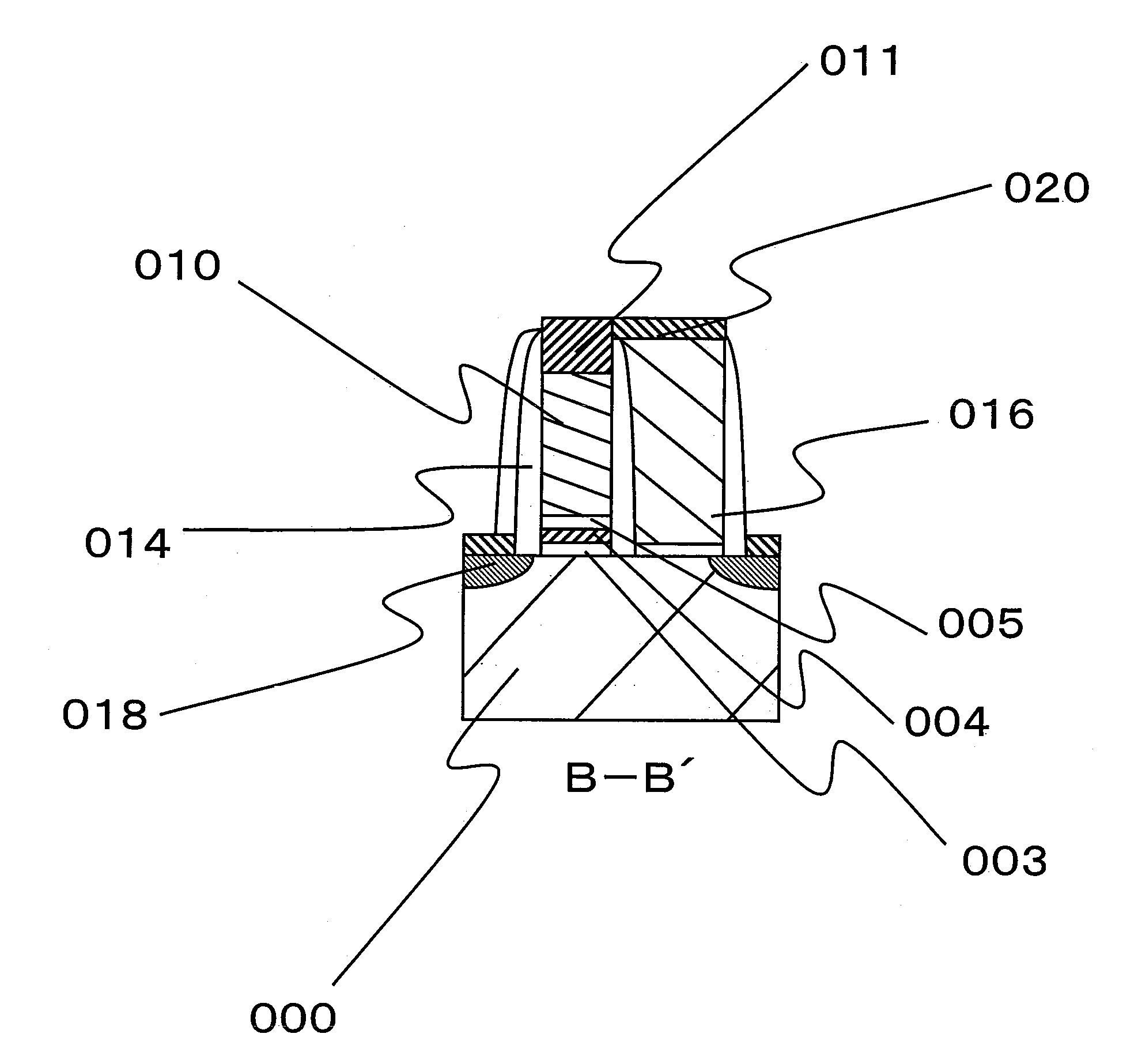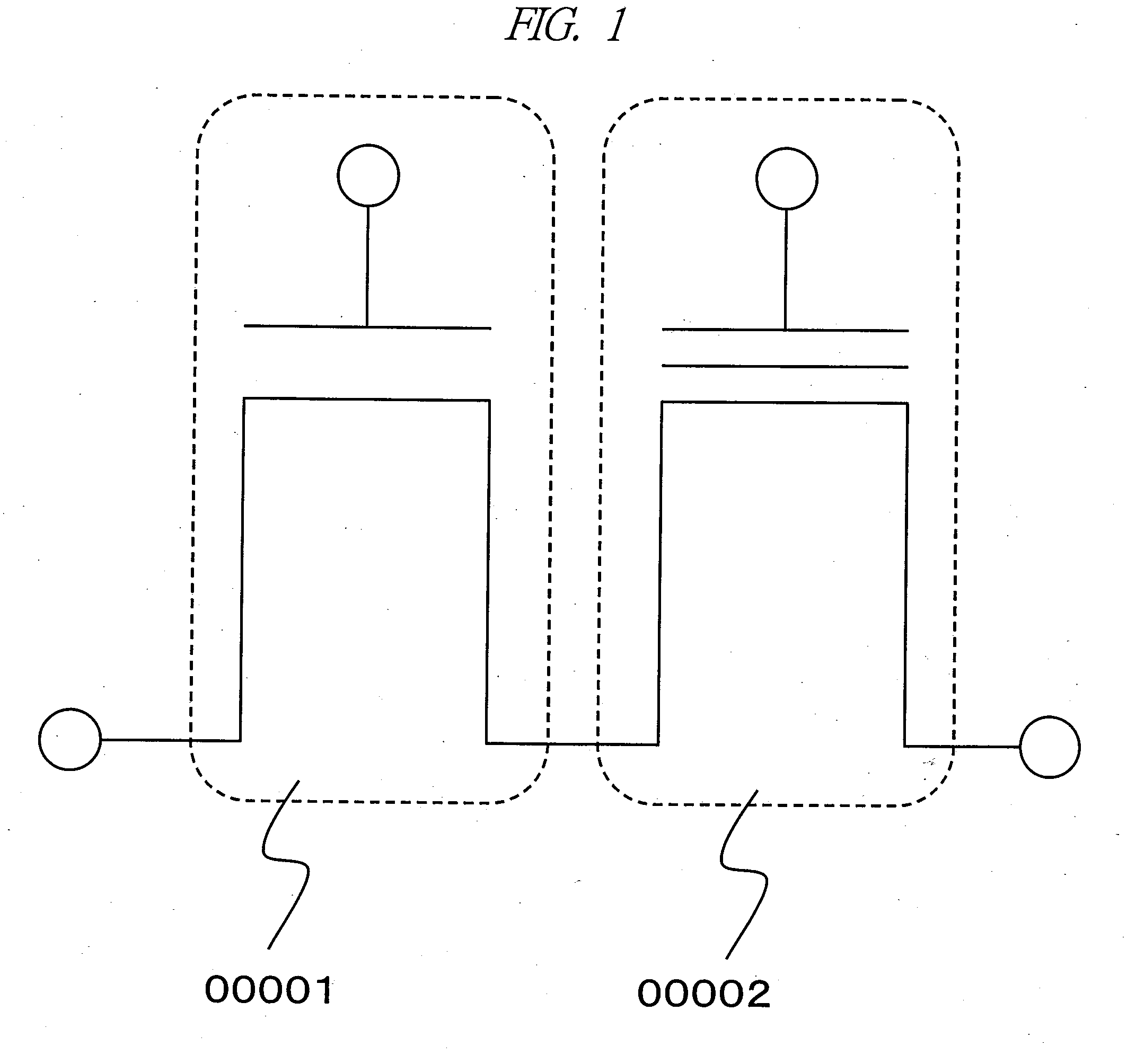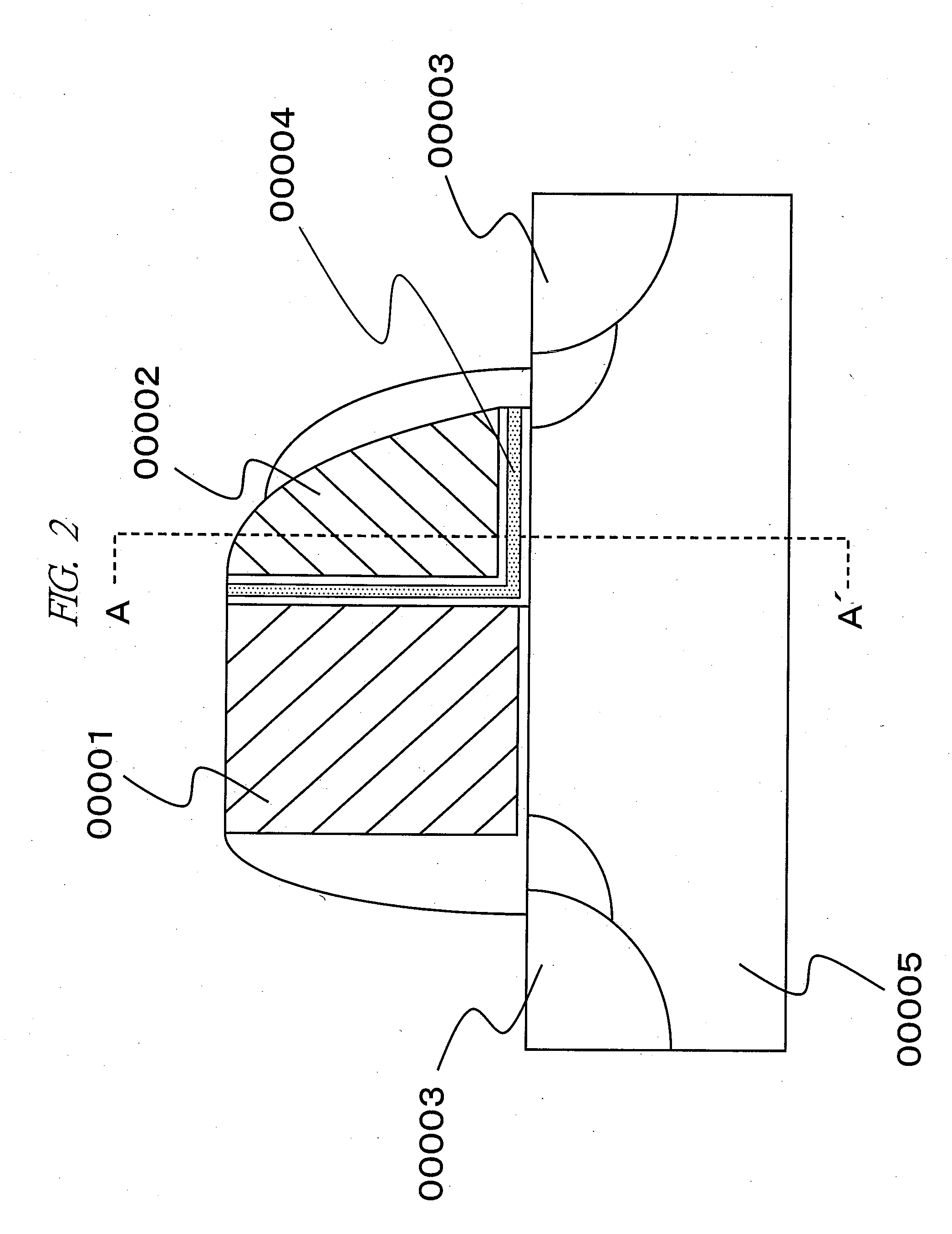Nonvolatile semiconductor storage device and manufacturing method of the same
- Summary
- Abstract
- Description
- Claims
- Application Information
AI Technical Summary
Benefits of technology
Problems solved by technology
Method used
Image
Examples
first embodiment
[0097]FIG. 4 is a plan view of a part of a semiconductor substrate showing an example of a memory cell region in a nonvolatile semiconductor storage device according to the first embodiment. In an element isolation region extending in a lateral direction on surface of a silicon substrate (semiconductor substrate) 000, an element isolation insulating film 009 extending in the lateral direction is formed to prevent the current interference between memory cells adjacent in a longitudinal direction. Also, the region other than that is an element formation region, and a memory cell, a source line and a bit line are formed therein. Further, a gate electrode 010 of a memory transistor (hereinafter, referred to as memory gate or memory gate electrode) extends thereon in the longitudinal direction, and a gate electrode 016 of a selection transistor (hereinafter, referred to as selection gate or selection gate electrode) extends in the longitudinal direction so as to be adjacent to the memory...
second embodiment
[0126]FIG. 29 is a cross-sectional view showing a nonvolatile semiconductor integrated storage device according to the second embodiment. The difference between the memory cell structure of the second embodiment and that of the first embodiment lies in that the selection gate electrode 016 is formed by the sidewall process. By forming the selection gate electrode 016 as the sidewall, the effect of reducing the memory cell area can be achieved in addition to those of the first embodiment.
third embodiment
[0127]FIG. 30 is a plan view of a part of a semiconductor substrate showing an example of a nonvolatile semiconductor storage device according to the third embodiment in the same manner as FIG. 4 of the first embodiment described above. FIG. 31, FIG. 32 and FIG. 33 are cross-sectional views of the semiconductor substrate each taken along the lines A-A′, B-B′ and C-C′ in FIG. 30. Also, FIG. 34 is a plan view showing an example of the peripheral circuit region of the same device, and FIG. 35 is a cross-sectional view taken along the line D-D′ in FIG. 34. More specifically, the regions represented by the lines A-A′, B-B′ and C-C′ correspond to the cross-sectional views of the memory cell region and the region represented by the line D-D′ corresponds to the cross-sectional view of the peripheral circuit region. The difference between the third embodiment and the first embodiment lies in that the memory gate electrodes are united by the polysilicon film at a position higher than the uppe...
PUM
 Login to View More
Login to View More Abstract
Description
Claims
Application Information
 Login to View More
Login to View More - R&D
- Intellectual Property
- Life Sciences
- Materials
- Tech Scout
- Unparalleled Data Quality
- Higher Quality Content
- 60% Fewer Hallucinations
Browse by: Latest US Patents, China's latest patents, Technical Efficacy Thesaurus, Application Domain, Technology Topic, Popular Technical Reports.
© 2025 PatSnap. All rights reserved.Legal|Privacy policy|Modern Slavery Act Transparency Statement|Sitemap|About US| Contact US: help@patsnap.com



